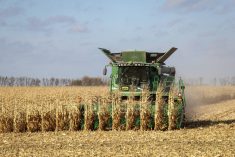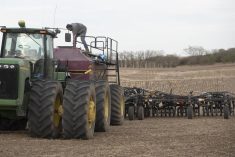Late July saw the return of staff and students from the University of Manitoba’s plant science department to the Ian N. Morrison Research Farm in Carman, Man., for its Research & Technology Field Day.
The day included tours of field plots and technology displays of current research in crop development, crop management, remote sensing, and digital agriculture.
Here are a few snapshots of the work showcased at the event:
Read Also

Still hard to predict precise fertilizer payback
Despite decades of advances, international research finds no clear answer for where and when adding nutrient will fail to boost growth.
Nurse crops to deter flea beetle feeding in canola
“Our research question is to see whether or not we can use cover crops or nurse crops like fall rye or spring oats to hide canola seedlings from flea beetles when they’re feeding during that critical period following emergence in spring,” said Yvonne Lawley, associate professor with the department of plant science.
Optimal herbicide timing for weed control in corn
“We basically want to know what is the most critical window to control weeds in corn before they begin disrupting yields. When does that period start and when does it end so that farmers really know when to spray their crop … so it’s most effective,” said Loveleen Khaur Dhillon, agronomist-in-residence for special crops with the department.
Nitrogen uptake of high-protein canola varieties
“What we’re looking at is how these high-protein varieties utilize nitrogen and where it’s allocated in the plant. We’re hoping to find a nitrogen dose response curve showing a difference in usage between low-protein and high-protein canola varieties,” said doctoral student James Cluff.
















